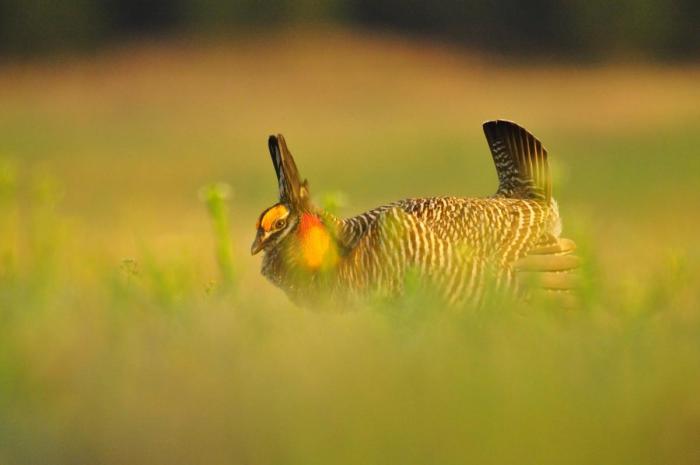Lower Loup NRD a Great Place for Bird Watching
Lower Loup NRD a Great Place for Bird Watching
LOUP LINES
Volume 45, No. 3 (March 2024)
Lower Loup Natural Resources District
Alan Bartels, Information & Education Coordinator
Nebraska is known worldwide for the spring migration of sandhill cranes. More than one million of the birds spend part of that season in the Platte River Valley, the largest gathering of any crane species on Earth. Along with the birds are a flock of birders and nature enthusiasts that migrate to Central Nebraska to see the spectacle. They infuse millions of dollars into our state’s economy, but many of those folks are missing out. What I mean is, when it comes to Nebraska birding opportunities, it is hard to beat the Lower Loup Natural Resources District.
The Lower Loup NRD is the largest Natural Resources District in Nebraska. The rolling grass-covered dunes of the Sandhills make up the western edge of the district, which is home to grassland bird species like long-billed curlews, sharp-tailed grouse, greater prairie chickens, common nighthawks, western meadowlarks, and northern harriers – to name only a few. Hundreds of bird species have been documented in the Sandhills region.
An entire other menagerie of bird life becomes visible when Sandhills ponds, lakes, and wetlands are added to the mix. At times, shallow ponds are overflowing with mixed flocks of shorebirds including the white-faced ibis, American avocets, black-necked stilts, Wilson’s phalarope, kildeer, sandpipers, and the lists goes on and on.
Elsewhere within the Lower Loup NRD, 514 miles of rivers and streams attract birds like pigeons drawn to a smalltown Nebraska grain elevator.
Most people recognize mallard ducks and other common birds. Here’s a fun fact for you: those masked behemoths honking back and forth between water sources and picked corn fields are Canada geese, not Canadian geese.
In addition to those recognizable common species, birders looking near water sources may spot white-fronted geese, huge flocks of snow geese and even trumpeter swans, as well as wood ducks, northern shovelers, scaup, common mergansers, hooded mergansers, and gadwalls.
In early spring at the Lower Loup NRD’s Pibel Lake Recreation Area, I’ve been fortunate to glimpse ring-necked ducks and redheads, canvasbacks, and teal in nearly every color of the avian rainbow. Double-crested cormorants dry their wings while perched on logs on the east side of the lake, and I’ve seen marsh wrens flitting through lakeside vegetation on the west side.
South of North Loup at Davis Creek Recreation Area, several species of gulls will feed in the inlet when gizzard shad and other small fish are surfacing there. I’ve had good luck photographing the birds as they dive with a smack into the water and emerge with their silvery prey.
When it comes to birds with a preference for fish, there is nothing living in the Lower Loup NRD that can out-fish the osprey. These birds are the master anglers of the raptor family, at least around here. It’s no fish tale when I say that ospreys can carry fish almost equal to their own body weight.
Other raptors seen here include red-tailed hawks, the similar looking sharp-shinned hawk and Cooper’s hawk, kestrels, and bald eagles. And of course, great-horned owls rule the night. These large owls even target skunks as prey.
Parts of our District include important habitat for sharp-tailed grouse and greater prairie chickens. The spring mating displays of these birds – sometimes referred to as dancing – give cranes a run for their money in terms of their energetic antics.
Males stake claim to territory within a grassland area known as a lek. Generations of these birds return to this same spot each spring for decades or longer, with dominant individuals earning the right to breed through ritualized combat that includes inflating colorful air sacks on their necks, jumping, kicking, and biting. Talk about a pecking order. The strange calls of the birds are a big part of the show.
Hens watch from the sidelines, with one eventually sauntering into the tall grass with the winning male to, well, you know.
In terms of natural resources, we often think of water and soil. When we protect those resources, we protect ourselves and our future generations, while providing for the wildlife that we are fortunate to share this place with.

A male prairie chicken in full breeding display at Calamus Outfitters, Loup County, in the Nebraska Sandhills. Loup County is in the Lower Loup Natural Resources District. Photo courtesy of Alan J. Bartels
